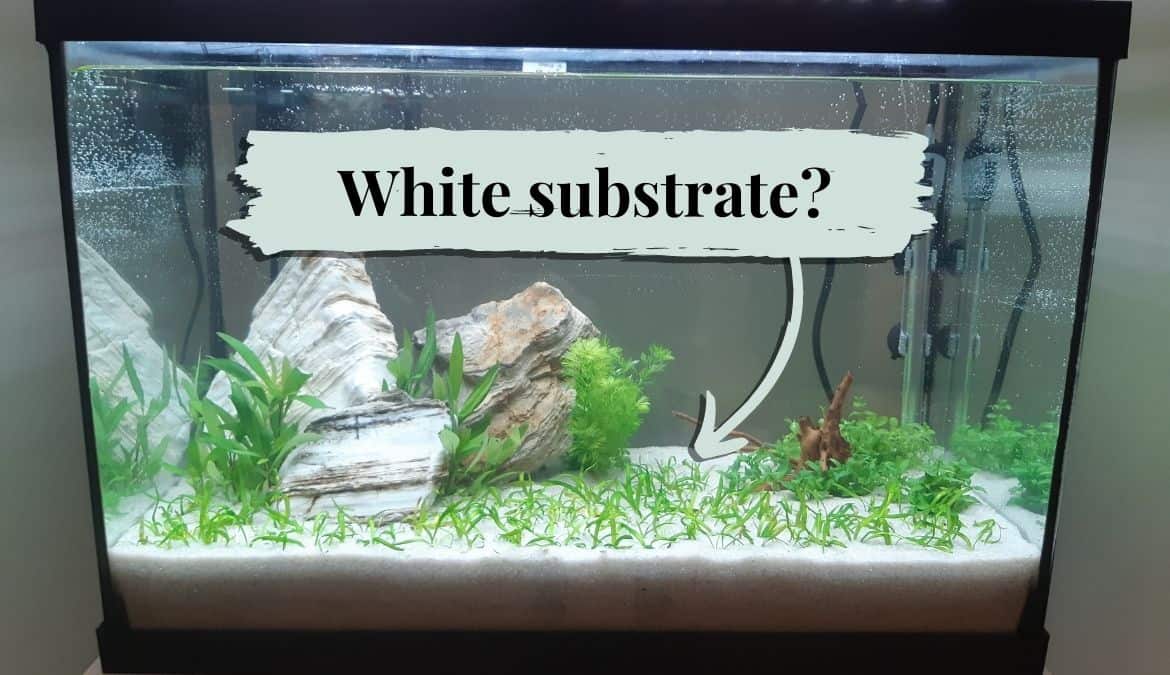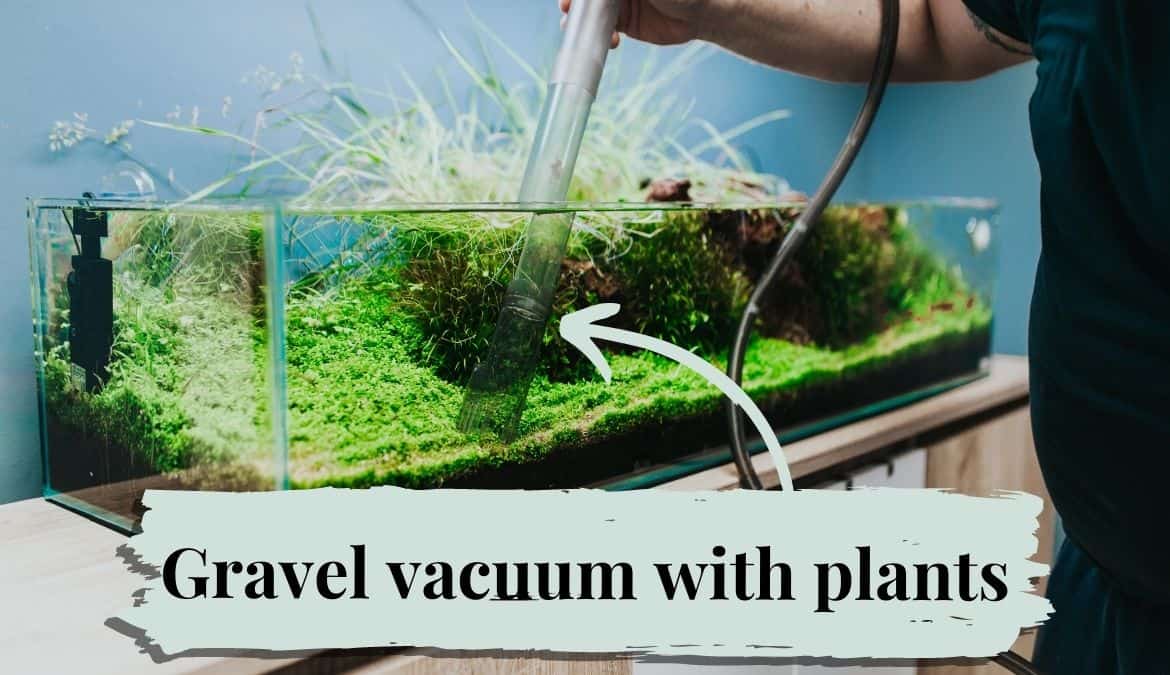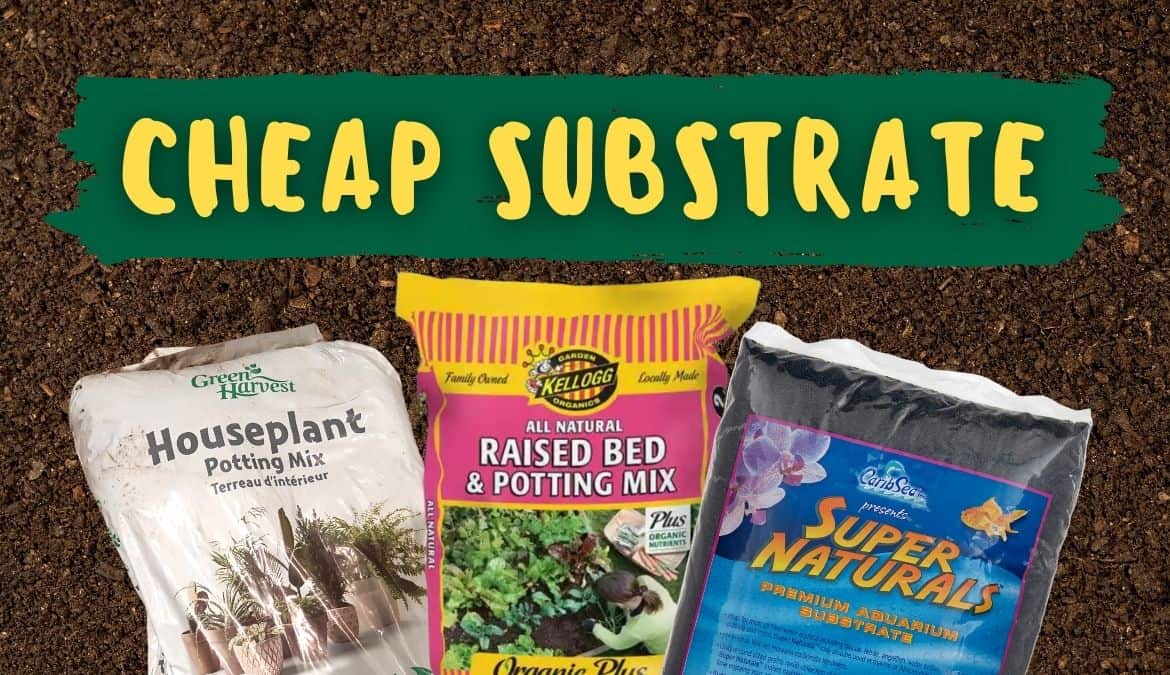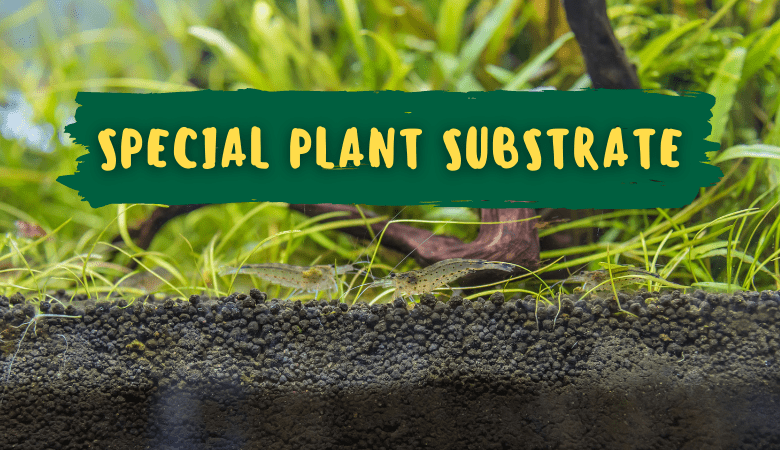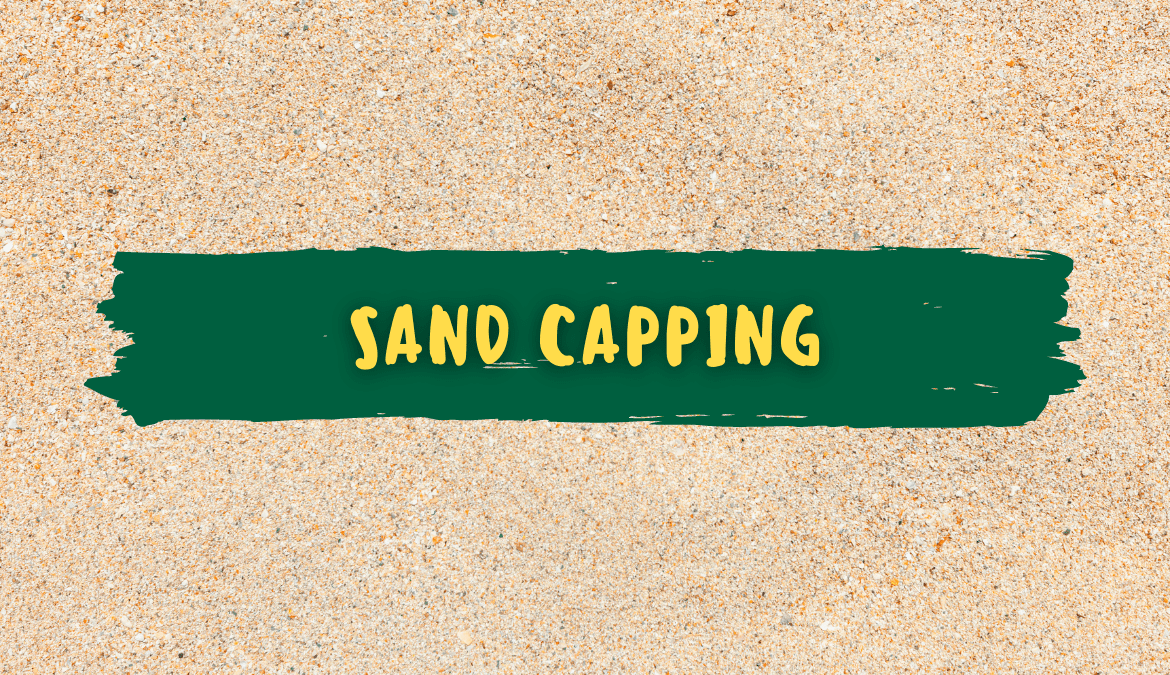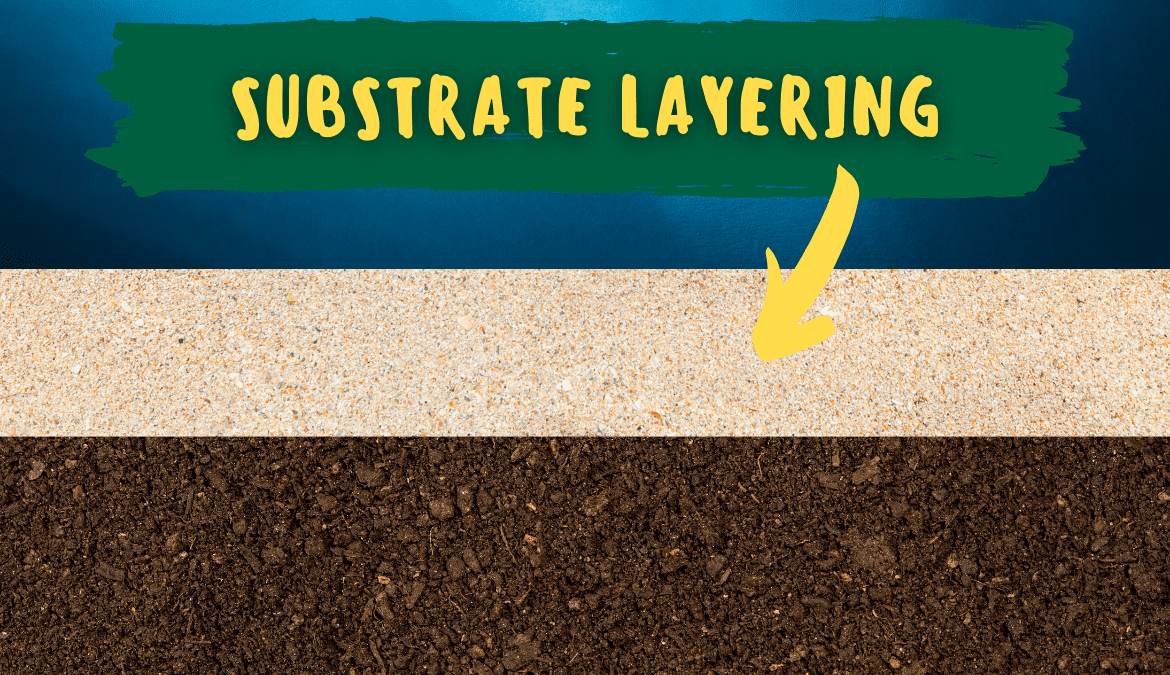It’s best to have a 1 to 2-inch layer of nutrient rich substrate as the base layer, capped with a 1 to 2-inch layer of insert sand or gravel. A thicker cap layer is important for dirted tanks to prevent it from leeching into the water column.
In this article, we will explore best practices for layering aquarium substrate for planted tanks.
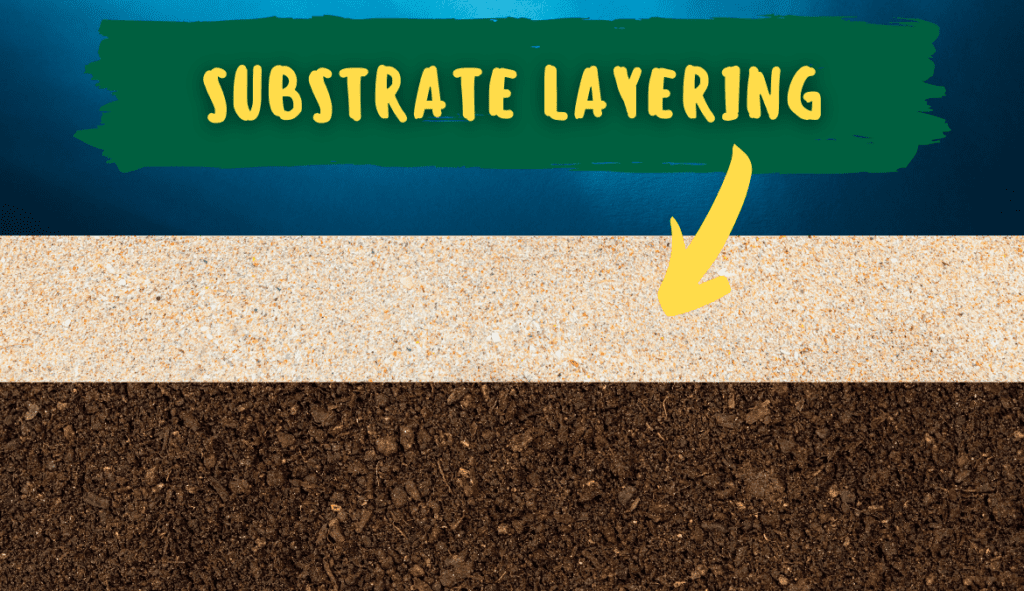
Contents
- 1 What types of substrate should be layered together?
- 2 The base layer should be a fertilizing substrate
- 3 The top layer should be at least 2-inches thick for dirted tanks
- 4 The top layer should be at least 1-inch thick for aquasoil tanks
- 5 Our recommended substrate layering system
- 6 Do you need to layer aquarium substrate?
What types of substrate should be layered together?
Fertilizing layer
This layer is made up of either organic soil or a nutrient-rich aquasoil. Its purpose is to provide macro and micronutrients to plant roots, such as nitrogen, potassium, phosphorus, iron, manganese and more.
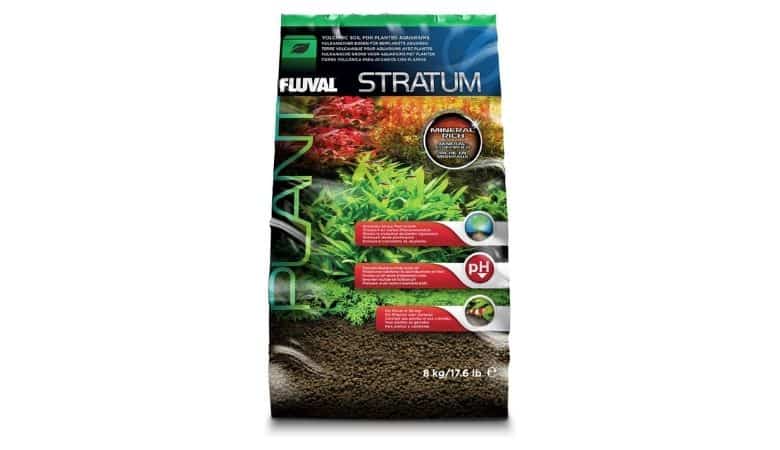
These substrates contain many of these nutrients when you buy them. They also have the ability to absorb and store nutrients over time. This is measured using a term called cation exchange capacity (CEC).
Here are some of the most popular nutrient-rich substrates for you to consider:
- Fluval Stratum;
- CaribSea Eco-Complete;
- ADA Amazonia; and
- Organic topsoil or organic potting soil (our personal favorite).
Capping layer
This layer is usually an inert substrate, such as sand or gravel, that prevents the fertilizing layer from leeching into the water column.
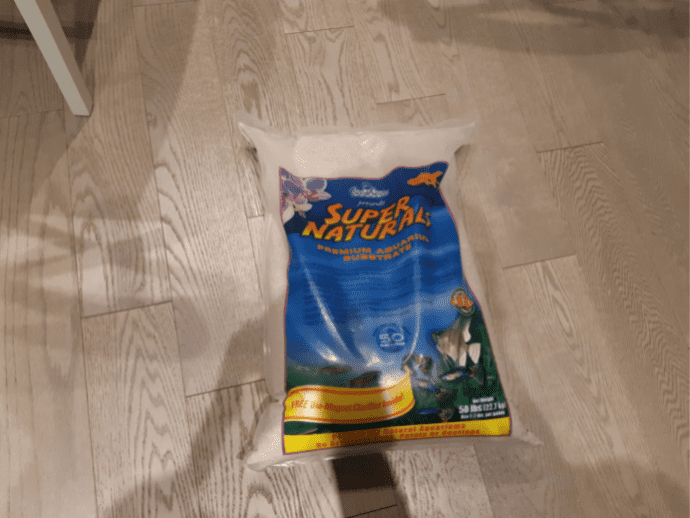
Fishkeepers also often choose a capping layer that is easy to plant in. Some aquasoils can be difficult to plant in because they have a large grain size and are too light to secure plants.
Decorative layer
Some fishkeepers choose to add an additional layer purely for decoration. This is less common but certainly an option if you don’t like the visual appeal of the capping layer.
More often than not, you can simply choose your favorite-looking inert substrate as your capping layer, which prevents the need for an additional decorative layer.
The base layer should be a fertilizing substrate
It’s best to put the most nutrient rich substrate on the bottom. This allows plant roots to take in nutrients from decomposing organic material as it settles towards the bottom of the tank.
Also, many nutrient rich substrates will leech ammonia into the water column. Keeping this substrate contained to the bottom layer minimizes how much ammonia leeches into the water at once.
This is especially important for organic soil or dirted tanks.
The top layer should be at least 2-inches thick for dirted tanks
If you are going with a dirted tank setup then we highly suggest capping the dirt layer with at least 2-inches of sand or gravel. This will ensure it does not leech into the water column, which is important for dirted tanks.
We’ve had great success using a sand cap but a gravel cap works well too.
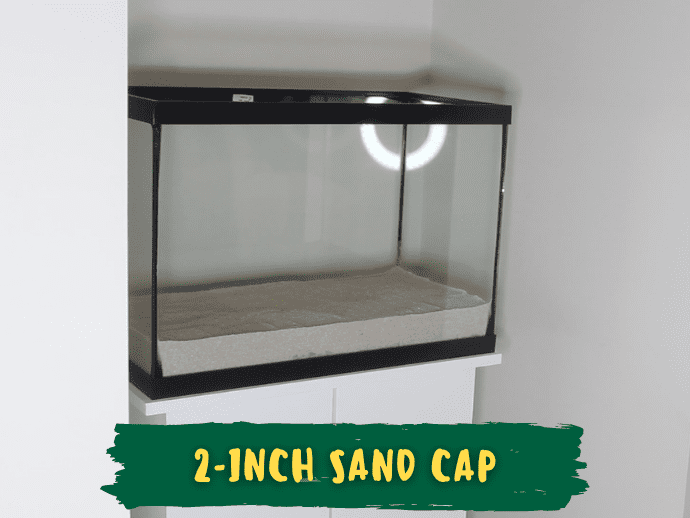
A 2-inch cap will promote anaerobic bacteria growth
An added benefit of having a 2-inch cap is that it will create an anoxic zone at the bottom layer of your tank, which will promote the growth of anaerobic bacteria. This includes beneficial nitrate-reducing bacteria that removes nitrate from your tank.
This is because oxygen will not be able to penetrate beneath about 2-inches of substrate.
The top layer should be at least 1-inch thick for aquasoil tanks
If you’re using an aquasoil then your cap is less important (unless you want to create an anoxic zone). The aquasoils may still leech ammonia into the water column, but this is true for most actvie substrates and will be filtered out by your biological filter.
Unlike dirt, most aquasoils will not cloudy the water too much, so there is no risk of the aquasoil being exposed to the water column. In fact, many planted tank keepers use aquasoil on its own without a cap.
However, some aquasoils, such as Fluval Stratum, are very light in weight and can be difficult to plant into. Therefore, a sand or gravel cap make it a lot easier to position and secure plants.
Our recommended substrate layering system
We’ve had the most success growing aquatic plants in a dirted tank. We suggest having a 1-inch layer of organic topsoil or potting soil that is capped with 2-inches of sand.
The sand works as an excellent cap to contain the dirt and is the easiest substrate to plant in because of how densly it is packed.
Many people believe plants can’t grow in sand. There might be some truth to this if you’re only using sand. But in our experience, the roots quickly grow down into the organic soil and flourish. Our plants have never grown better!
The organic soil is jam-packed full of nutrients to promote exceptional plant growth. We’ve had nothing but success growing plants in dirted tanks.
Do you need to layer aquarium substrate?
It is not necessary to have multiple layers of aquarium substrate. The average planted aquarium will often include just a single layer of substrate.
It’s usually a nutrient rich aquasoil, such as Fluval Stratum or ADA Amazonia. But you can also grow plants in inert gravel or sand if you have adequate root tab and liquid fertilization.
If you’re planning on setting up a dirted aquarium then it’s necessary to have a cap to prevent the dirt from clouding then water column.


